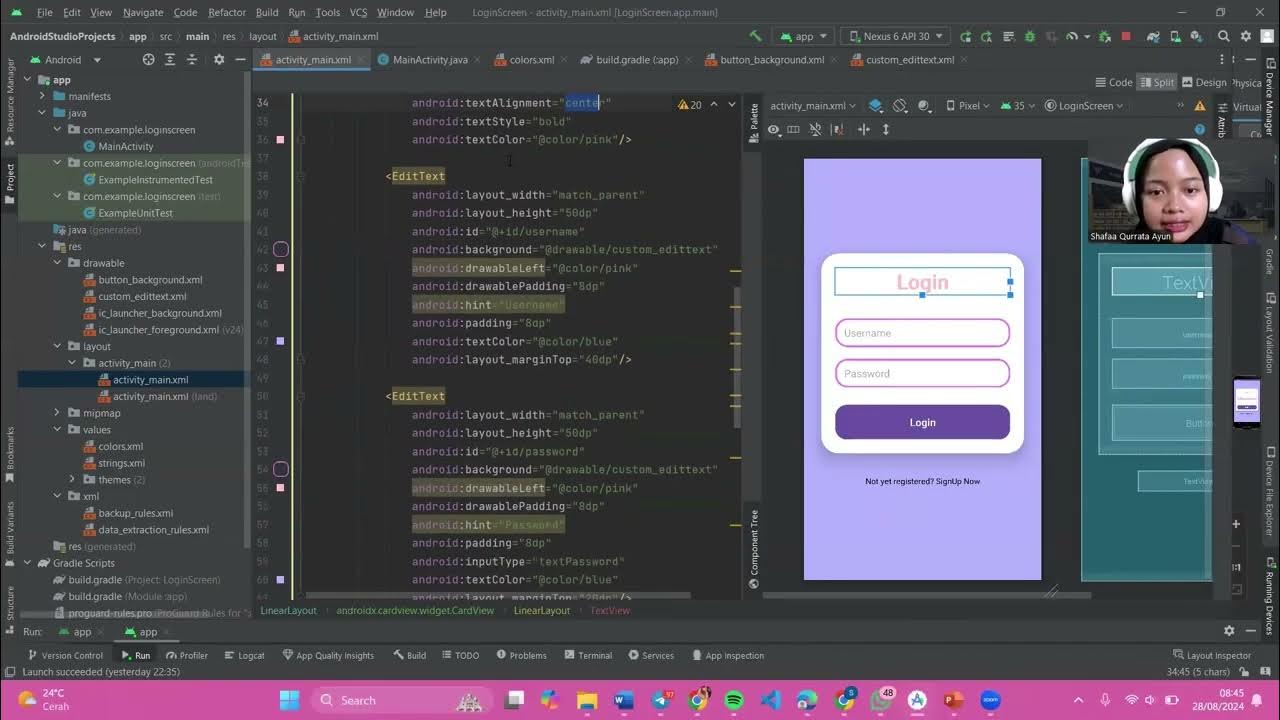Introduction To Android Application Development | Simplilearn
Summary
TLDRThis video introduces Android application development, focusing on building, testing, and publishing apps. It covers essential topics such as the Android operating system's architecture (Linux Kernel, libraries, Android runtime), and the four main components of Android apps: Activity, Service, Broadcast Receiver, and Content Provider. Additionally, the video explains key tools like the ADT bundle for app development, Android Virtual Device (AVD) for testing, and Dalvik Debug Monitor Server (DDMS) for debugging. Overall, it provides a comprehensive foundation for developing and deploying Android applications.
Takeaways
- 📱 Android application development course will teach how to create and publish apps on Google Play.
- 💻 Basic Java knowledge is beneficial but not mandatory for the course.
- 📚 By the end of the course, learners will understand Android architecture, activity lifecycle, services, and more.
- 🧑💻 The Android operating system architecture includes four sections: Linux Kernel, Libraries, Android Runtime, Application Framework, and Applications.
- 🔑 Linux Kernel provides security, memory, process management, and acts as a hardware abstraction layer.
- 🔧 Libraries like SQLite, SSL, and WebKit are essential for various Android functionalities like database management, security, and browser integration.
- ⚙️ Android Runtime includes core libraries and Dalvik Virtual Machine (DVM), enabling efficient multitasking for apps.
- 📱 Four main Android components are Activity, Service, Broadcast Receiver, and Content Provider, each serving specific roles in app development.
- 🔁 Activity lifecycle consists of key methods like onCreate, onStart, onResume, onPause, and onDestroy, helping manage app behavior.
- 🛠️ Android Virtual Device (AVD) allows testing apps on a virtual device before deploying to a physical one, using tools like DDMS for debugging.
Q & A
What are the main objectives of the Android application development course?
-The main objectives of the course are to explain the architecture of the Android operating system, list the components of an Android application, describe the activity lifecycle, explain the stack of activities, and provide insights into services, broadcast receivers, and content providers.
What is the Linux kernel's role in the Android operating system architecture?
-The Linux kernel provides services such as security, memory management, process management, network stack, driver model, and power management. It also acts as an abstraction layer between the hardware and the rest of the software stack.
Can you describe the purpose of the Android runtime and its two parts?
-The Android runtime is divided into two parts: core libraries and the Dalvik Virtual Machine (DVM). The core libraries provide almost all the functionalities available in Java's core libraries. The DVM, which is register-based, is optimized for running multiple instances efficiently, allowing each application to run in its own instance.
What is an activity in Android development, and why is it important?
-An activity represents a single screen with a user interface (UI) or window. It is the main entry point for interacting with users and is crucial because it manages how the UI is displayed and interacts with users. Activities must be registered in the AndroidManifest.xml file.
What are the main functions in the activity lifecycle, and how do they work?
-The main functions in the activity lifecycle are: onCreate, onStart, onResume, onPause, onStop, onRestart, and onDestroy. These functions manage the activity's state, from initialization (onCreate) to pausing (onPause) when another activity takes focus, and finally, destruction (onDestroy).
How does the activity stack work in the Android environment?
-The Android environment maintains a stack of all open activities for each application. When a new activity starts, it is added to the stack. When an activity is closed, its entry is removed. This stack allows users to move back and forth between activities.
What is a service in Android, and what are its primary functions?
-A service is a component that runs in the background to perform long-running operations or tasks for remote processes. It does not provide a user interface. The main functions of a service are onCreate, onStart, and onDestroy.
What is a broadcast receiver, and how is it used in Android development?
-A broadcast receiver listens for broadcast intents sent by the Android system or other apps. It must be registered in the code or the AndroidManifest.xml file. Broadcast receivers are used to react to system-wide events like battery level changes or the phone being turned on.
What is a content provider, and when is it necessary to use one?
-A content provider is used to manage access to a structured set of data. It allows applications to share data with other apps. For example, contacts data is shared between apps like WhatsApp and Truecaller. A content provider is necessary when multiple applications need to access the same data.
What is an Android Virtual Device (AVD), and why is it useful for developers?
-An Android Virtual Device (AVD) is an emulator that allows developers to run and test applications on a virtual device without needing physical hardware. It provides a simulated environment to test different device configurations and operating system versions.
Outlines

Dieser Bereich ist nur für Premium-Benutzer verfügbar. Bitte führen Sie ein Upgrade durch, um auf diesen Abschnitt zuzugreifen.
Upgrade durchführenMindmap

Dieser Bereich ist nur für Premium-Benutzer verfügbar. Bitte führen Sie ein Upgrade durch, um auf diesen Abschnitt zuzugreifen.
Upgrade durchführenKeywords

Dieser Bereich ist nur für Premium-Benutzer verfügbar. Bitte führen Sie ein Upgrade durch, um auf diesen Abschnitt zuzugreifen.
Upgrade durchführenHighlights

Dieser Bereich ist nur für Premium-Benutzer verfügbar. Bitte führen Sie ein Upgrade durch, um auf diesen Abschnitt zuzugreifen.
Upgrade durchführenTranscripts

Dieser Bereich ist nur für Premium-Benutzer verfügbar. Bitte führen Sie ein Upgrade durch, um auf diesen Abschnitt zuzugreifen.
Upgrade durchführenWeitere ähnliche Videos ansehen

Lecture 1 - Introduction to Mobile Application Development

PGPB Acara 1 Linear Layout

What Is Kotlin Multiplatform And How Does It Work? - KMP for Beginners

IT140P Module 1 Lecture Intro to Application Development Part 1

Xcode Tutorial - Step by Step for Beginners

Flutter - Build and Release an Android App | App Signing
5.0 / 5 (0 votes)
